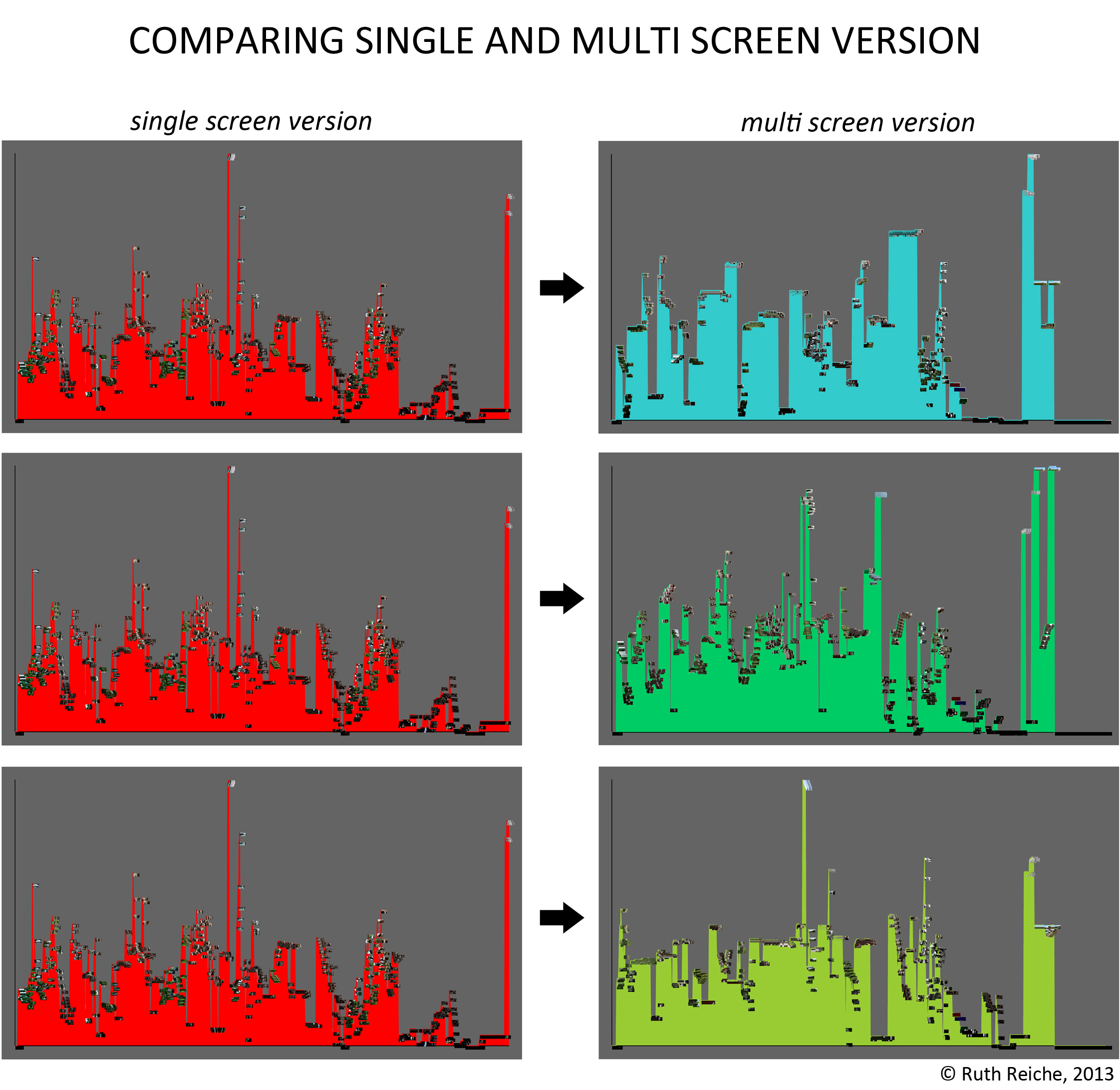In my last blog post I described how I explored Eija-Liisa Ahtilas 3-channel-installation THE HOUSE (2002) with ImagePlot (please see below). Ahtila is one of the artists who act not only in the art world but also in the screenland. That’s why she often produces more than one version from the same material, one multi screen version for displaying in the gallery or museum space, one single screen version for presenting in cinema. I’m sure you know I would like to get at – there’s not only a multi screen installation of THE HOUSE but also a single screen version, embedded in her portmanteau film LOVE IS A TREASURE (2002). For a better understanding of the particular potential of both presentation modes it would be interesting in which way both versions resemble each other and in which manner they differ.
Continuing my experimentation with ImagePlot, I did the same analyzes with the single screen version of THE HOUSE as I did with the single screen version before. You see the results below: The first picture shows the change of the median value (y-axis) over the film’s length (x-axis), the second shows the filled curve and the third combines both views (for this ‚combined plot‘ I manipulated the images with an image editor software).
For comparing both versions I opposed the ‚combined plot‘ of the single screen version with the ‚combined plots‘ of the multiscreen version. In the first row of the graphic below you see the single screen version compared to the left screen of the multi screen version, in the second row you see the same compared to the middle screen and in the third compared to the right screen.
What information can you get out of this? For me it seems that the middle screen of the multi screen version is the most similar to the single screen version. So this investigation by means of ImagePlot accounts for curator Doris Krystof’s opinion that the middle screen seems to show the main storyline:
Dabei nimmt das Bild in der Mitte insofern eine Sonderstellung ein, als man dort den Haupterzählungsstrang auszumachen meint.
– Doris Krystof (Bestandskatalog K21 Düsseldorf, Köln 2005, S. 28)


Schreibe einen Kommentar